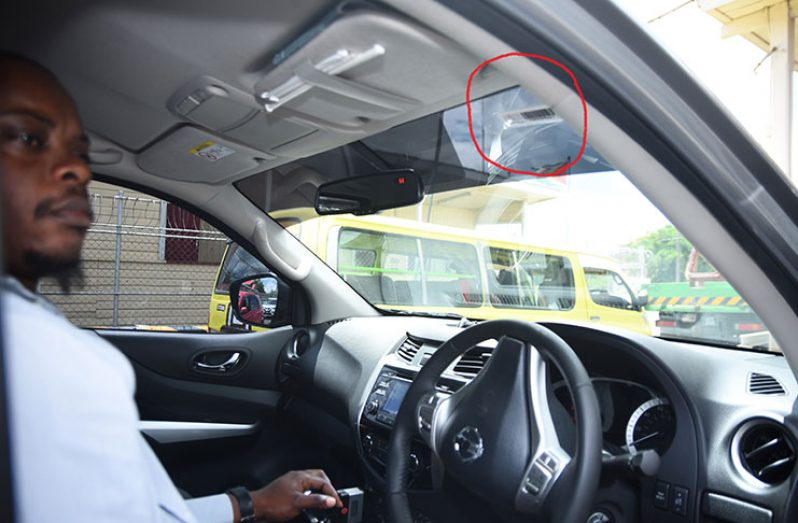CITIZENS who traverse the Demerara Harbour Bridge daily are closer, this year, to having access to an automated toll-collection system with Phase One of the project for completion next month.
Phase One deals with testing and implementation at toll booths and is funded through some $5.5M of the Corporation’s toll revenue. Phase Two will include gradual, wide-scale installation to the vehicles of interested persons.

Speaking with this newspaper on Thursday, Demerara Harbour Bridge Corporation (DHBC) Electrical Engineer, Andre Crowder, said that things are moving ahead smoothly. The automated toll-collection system, already installed at the various toll booths at the bridge, will save commuters time and increases data management for the Bridge Management.
The last time the Guyana Chronicle did an update, the DHBC was about to begin the process of testing the system by implementing it with its eight charge-companies. The new system utilises Radio-Frequency Identification (RFID), a form of wireless communication which uses electromagnetic fields to automatically identify and track tags attached to objects.
Almost 10,000 vehicles traverse the Demerara Harbour Bridge daily and this would mean an instantaneous process of producing a ticket where drivers simply drive up to the toll booth, collect their tickets and continue on their way.
Drivers can even pass through the toll booth without stopping, as an electronic receipt of their payment will be accessible on line. “The first part will be finished by February. We’ve already implemented it at the booths and we’re just doing some other testing before we actually roll out to the public which could be some time later in the year,” Crowder said.
Toll booth operators will have the option of utilising the cash-based system for drivers without the RFID tag, or any driver who simply wishes to pay with cash. The new software presents fewer options; has an online means of making payments; reduces the likeliness of errors and the amount of cash stored at the booths. Added to this, the DHBC will collaborate with the Guyana Revenue Authority (GRA) so that information captured can be compared in the authority’s database to capture illegal vehicular activities, which could also be shared with the police for greater security. The automated toll-collection system was birthed after the DHBC realised that it must utilize innovative ways to deal with its challenges related to poor server connection, power outages, over pressured toll booth operators, a decade-old system and human error.




.jpg)










